With warmer weather finally arriving, Jacques, Ken and I have been working on the new garden at York House, just outside North Hatley, Quebec. We extended the border that backed onto the woods, widening it and backing it with a low stone wall.
Here is the view before we began work.
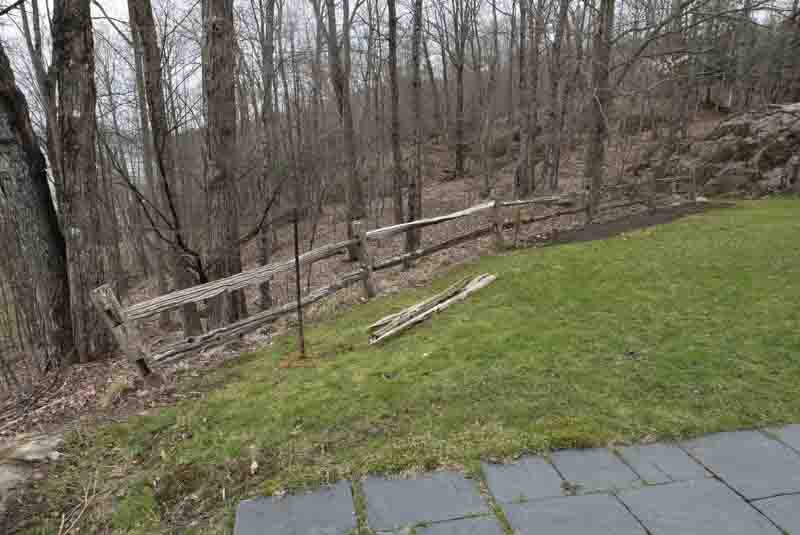
Split rail fences are traditional in the Eastern Townships.
Here is the view now.
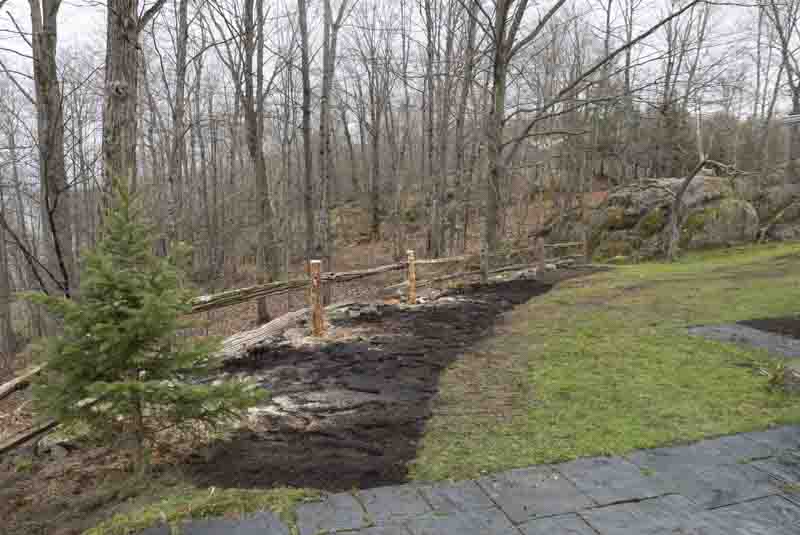
The small spruce tree at the near end of the border acts like a full stop at the end of a sentence.
Yet to come are some large rocks, collected from rock piles on the property. They will help to connect the border with the boulders nearby and add visual (and actual!) weight.
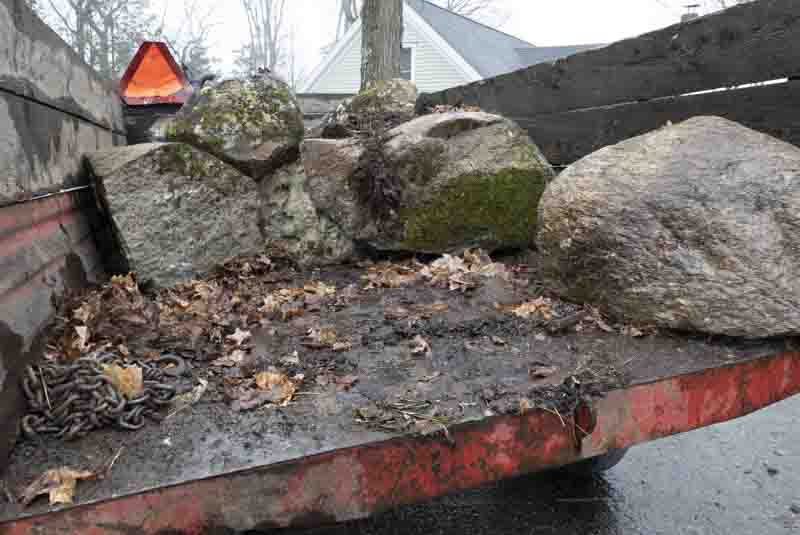
We’d already placed four or five rocks when I took this photo.
Also to come are the plants, of course! The end of the border nearest the lake is sunny but the shade becomes denser as the border stretches towards the woods. That means I’ll need to use a mix of sun and shade loving plants. Since every plant has to be deer resistant, I’m considering Rodgersia, a plant with big, leathery leaves that does well in part shade, and nepeta or perovskia in the sunny areas, along with astilbe and some flowering shrubs. These are not adventurous choices and my ideas may change over time, but I want the rocks and the woods to remain the focal points. But please know that I welcome any and all suggestions!
On the side of the house that faces the fields, we planted two groups of birch trees. I’m extremely lucky: these trees were free for the taking! A few years ago, when we dredged the pond by the road, we dumped the wet dirt on another part of the property. Several dozen birch trees have seeded themselves in that rich soil. Transplanting them is still relatively easy since they are small enough to move without too much risk.
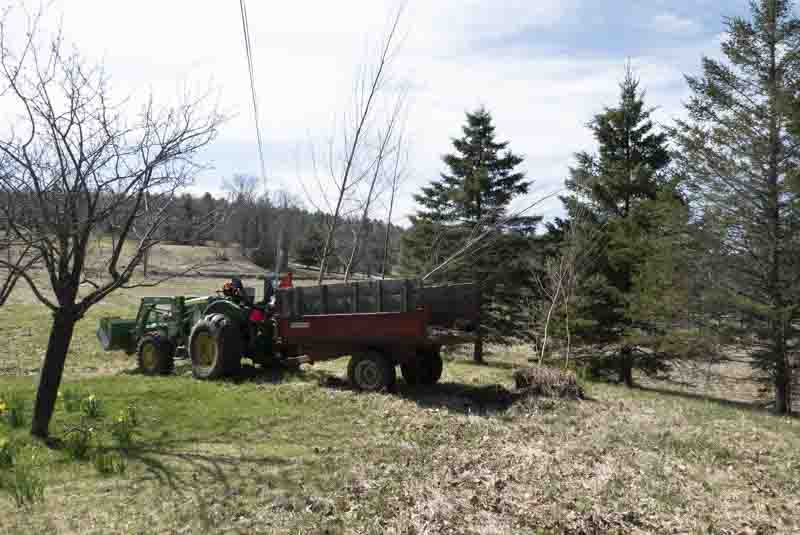
Thankfully the trees didn’t have too far to go in the back of the wagon.
The two small trees on the ground in the photo above are now planted near the front door. The others are planted on both sides of the split rail fence that marks the edge of the field.
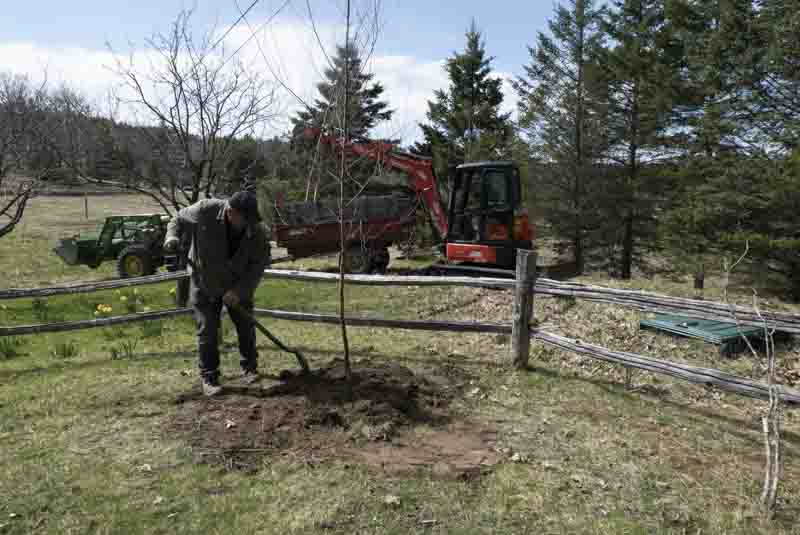
We rented the swing shovel to transplant the trees and to move some large rocks.
We continue to clear the view over the cliff and towards the water. Four years ago, you couldn’t see the lake at all.
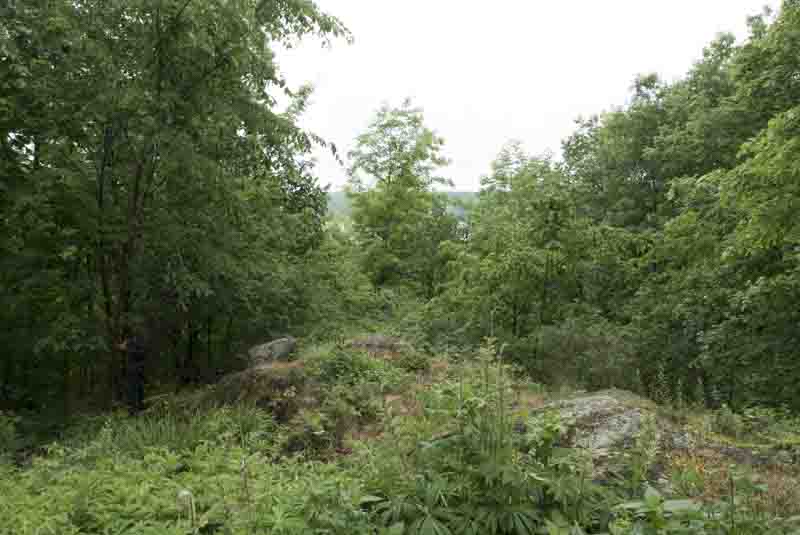
This is the view from June, 2020.
This is the view now. What an improvement!
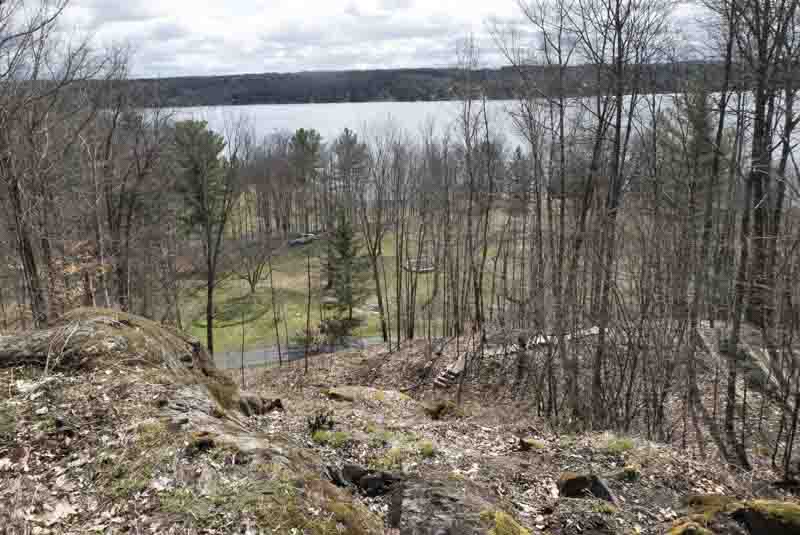
On April 20, 2024, the lake was clearly visible, as was the path through the woods below and part of the Big Meadow at Glen Villa Art Garden, my old house and garden.
One of the challenges in gardening is knowing when to stop. (Isn’t that always the case?) In clearing away the scrubby brush covering these boulders, we discovered a large crevice between two of them.
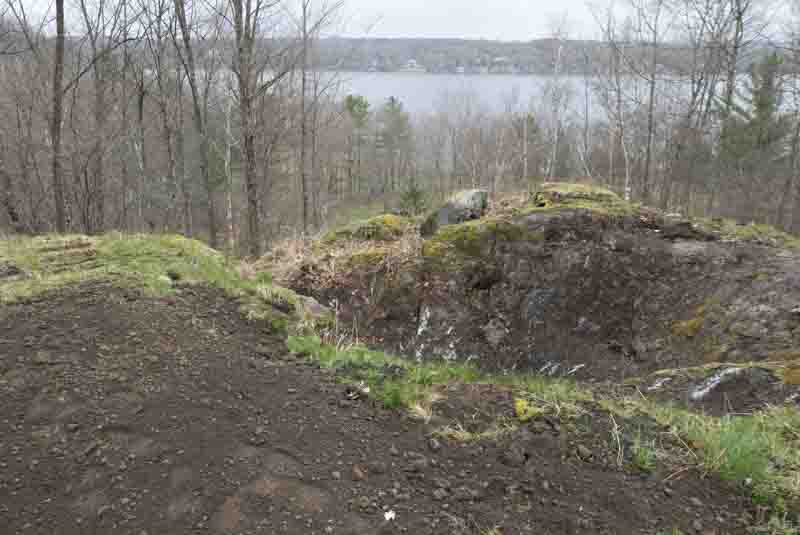
This is a side view of the big hole we discovered.
A photo doesn’t give any sense of the dimensions, but I’m guessing that the hole is about six feet deep at the deepest. What to do with the space? Will it hold water? If yes, will the water be the perfect place for mosquitoes to gather and multiply or will it provide a sparkling mirror of the sky above?
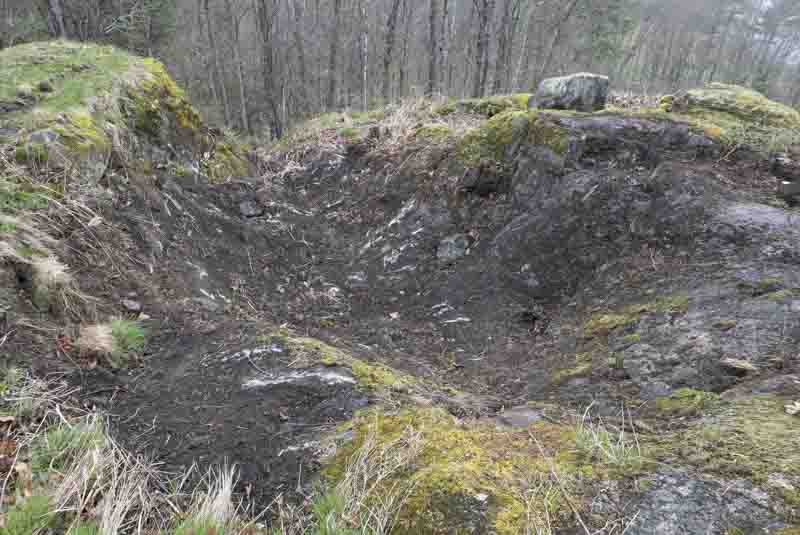
This is the view of the big hole straight on.
We’ll clean the rocks, removing as much of the remaining dirt as possible. Then what? I have no idea if a small pool will be the answer or if some other approach will take better advantage of this natural feature. Again, if anyone has suggestions, please send them along.
On Friday, I’m heading off to France for three weeks, visiting some familiar gardens as well as some new ones. When I return, the garden at York House will be much greener than it is now. And who knows, what I see in France may inspire the plantings I choose.
I post regularly on Instagram, so follow me as I visit gardens far and wide. Or put together a group to visit Glen Villa Art Garden and York House. There is always something to see!

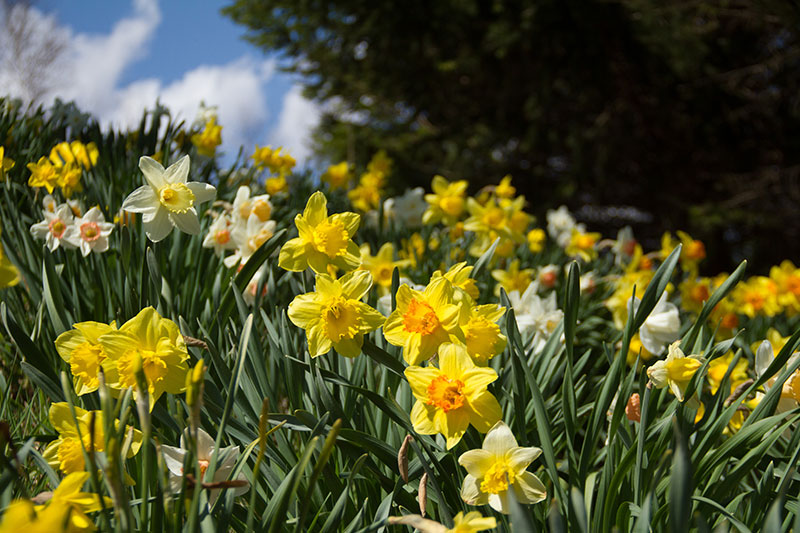



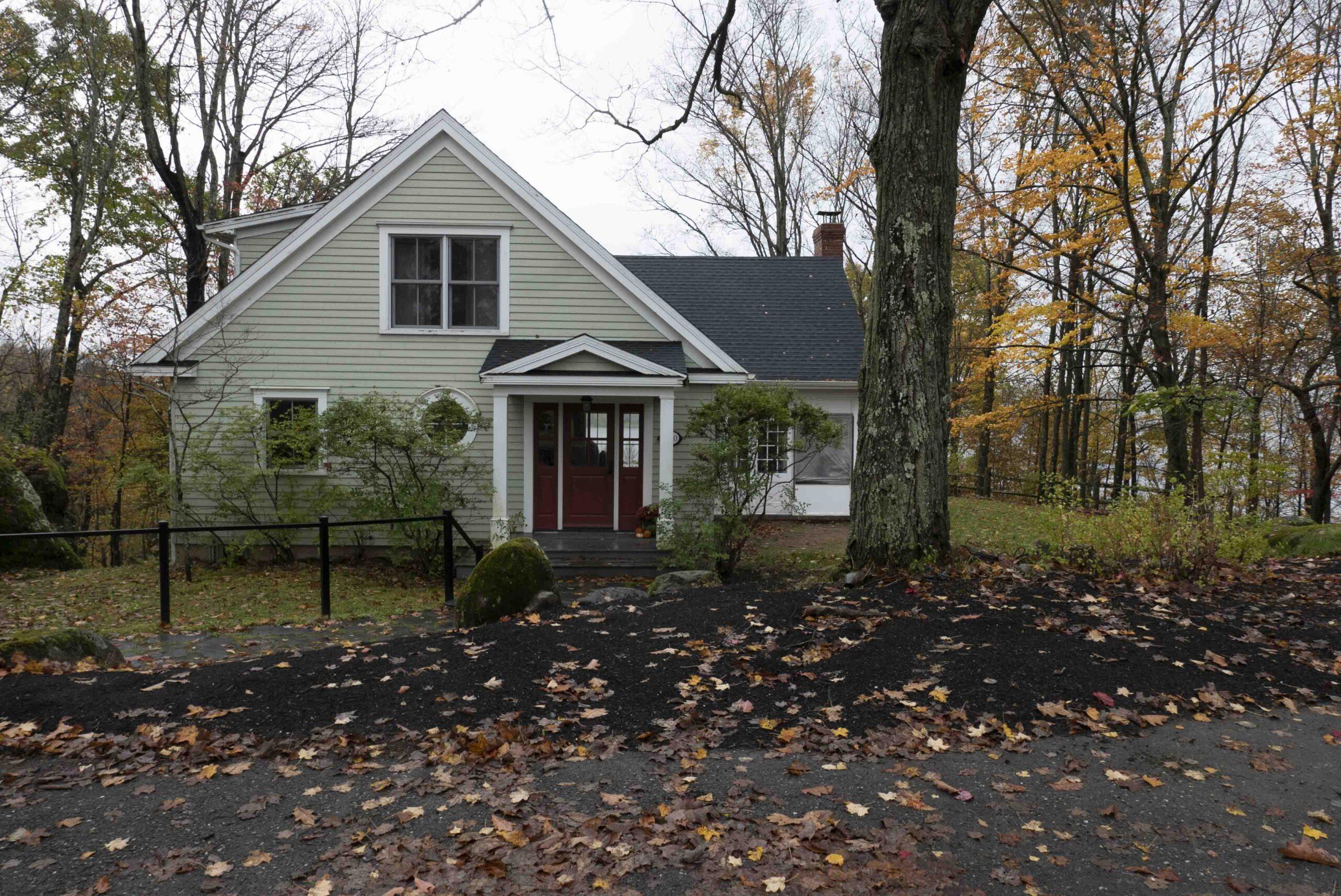
Hi, I don’t think your planting needs to be adventurous. What matters is that they are happy and that they are ones you love.
What do you do with that big hole though!??!!
How wonderful to have a new smaller garden to create! And to have your daughter and her family in your “old” house.
“Will the water be the perfect place for mosquitoes to gather and multiply or will it provide a sparkling mirror of the sky above?” Both, I expect. Mosquitoes like still water. Would you consider mosquito dunks an option? Or goldfish?